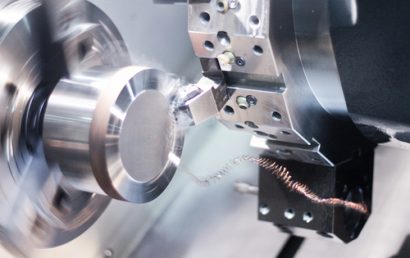Unveiling The Types Of Conductive Metal Coating
In the dynamic domain of industrial coatings, understanding the types of conductive metal coating is vital for numerous applications. These coatings, specialized for their ability to conduct electricity, play a critical role in industries ranging from electronics to aerospace. Beyond just conductivity, these coatings also offer a spectrum of benefits, including corrosion resistance and enhanced durability. In this exploration, we will shed light on the various conductive coatings available and how they cater to specific industrial needs.
Electroless Nickel Plating
Electroless nickel plating is one of the renowned coating processes that does not rely on an external electricity source. Instead, a chemical reduction process deposits the nickel layer. This ensures a uniform coating thickness, even on complex shapes. One of the main advantages of this coating is its superior resistance to corrosion, making it suitable for components exposed to harsh environments.
Gold Plating
Gold is not just a precious metal for jewelry; it has significant applications in conductive coatings, especially in the electronics industry. Gold plating offers excellent conductivity and is resistant to corrosion. Moreover, due to its inert nature, it ensures that sensitive components remain free from oxidation, maintaining their performance over time.
Silver Plating
Offering the highest electrical conductivity among all metals, silver is an obvious choice for conductive coatings. While it provides exceptional conductivity, silver is susceptible to tarnishing. However, with the right proprietary coatings, one can enhance its resistance to oxidation and tarnish, ensuring long-lasting performance.
Copper Plating
Predominantly used in the electronics sector, copper plating is pivotal in the manufacturing of printed circuit boards. It provides a conductive layer, ensuring seamless transmission of electrical signals. Additionally, copper offers good thermal conductivity, making it a favored choice for components that require heat dissipation.
Composite Coatings
Sometimes, a single metal might not provide all the desired properties. In such cases, composite coatings come into play. These coatings blend metal particles with non-metallic materials to enhance specific properties. For instance, combining silver with a polymer can increase wear resistance without compromising on conductivity.
Choice of Coating Materials
The selection of the right coating materials is paramount to ensure the coated component’s performance aligns with its intended application. Factors such as operating environment, exposure to chemicals, and expected electrical loads determine which metal coating would be most suitable. For example, while silver offers unparalleled conductivity, its proneness to tarnish might make gold a better choice for certain applications.
Post-Coating Treatments
After the application of conductive coatings, components might need further treatments to achieve the desired finish or meet specific dimensional criteria. Processes such as machining & grinding are crucial to refine the coated component, ensuring it fits perfectly and functions optimally. For instance, if a coated component is to be used in a precision instrument, post-coating machining might be necessary to achieve the tight tolerances required.
Understanding the types of conductive metal coating is just the tip of the iceberg. Delving deeper reveals a world where the fusion of science and engineering ensures that components meet the rigorous demands of modern industries. As technologies evolve, the realm of conductive coatings will undoubtedly witness innovations, pushing the boundaries of what is achievable today. Whether it is enhancing the conductivity of a circuit board or ensuring an aerospace component can withstand extreme conditions, conductive metal coatings are at the heart of many industrial advancements.



